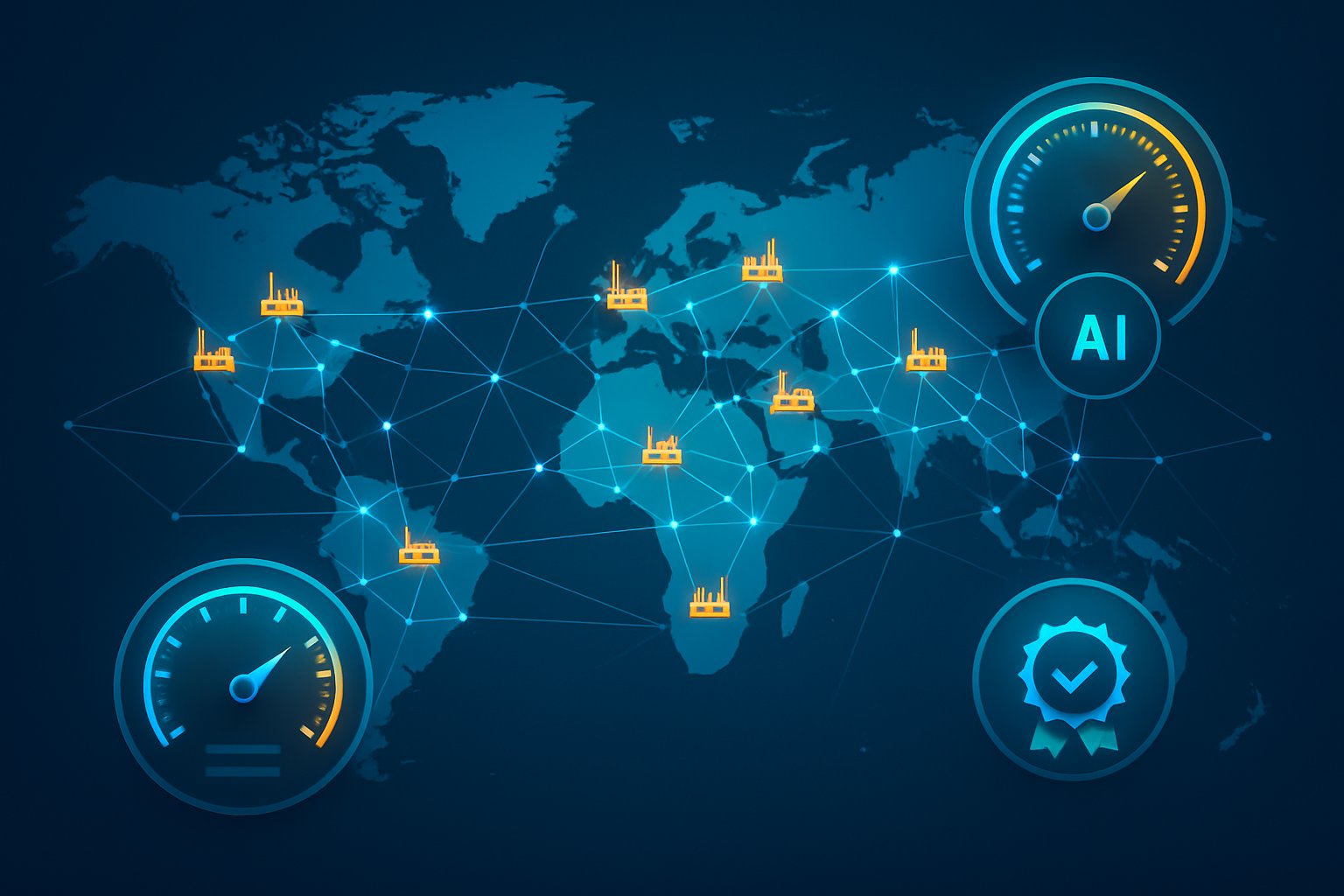
AI CERTS
2 hours ago
AI Reinvents Quality Assurance in Global Manufacturing

However, lofty headlines hide nuance. Performance depends on baseline quality, data readiness, and integration into shop-floor control loops. This article unpacks mechanisms, results, and next steps so leaders can replicate success. Subsequently, readers will gain an actionable roadmap grounded in verifiable data.
Market Momentum Rapidly Builds
Global demand for AI inspection accelerates, buoyed by rising labor costs and stricter regulations. MarketsandMarkets estimates the AI-in-Manufacturing segment could quintuple between 2025 and 2030. Meanwhile, venture funding keeps flowing to Computer Vision startups that specialize in surface flaw analysis. Consequently, buyers enjoy expanding choices, from enterprise suites to nimble niche solutions.
Andrew Ng highlights the gap between pilots and scaled rollouts as the next barrier. Therefore, platforms such as LandingLens now integrate with Snowflake, AWS, and MES software. This integration simplifies data plumbing, model management, and ongoing Quality Assurance governance.
Industry analysts predict early adopters will widen competitive gaps as defect costs fall. In contrast, laggards may pay heavier warranty, scrap, and reputational penalties.
The financial stakes have never been clearer. However, understanding the technology’s defect-cutting mechanics remains vital before investing.
How AI Cuts Defects
At its core, Computer Vision captures high-resolution images of every product. Machine-learning models then classify surfaces, components, and dimensions in milliseconds. Furthermore, anomaly algorithms flag unfamiliar patterns beyond the training set. Consequently, 100 percent inspection replaces manual sampling, shrinking escaped defects.
Closed-loop control converts detection into prevention. Edge devices send failure signals to SPC or PLC systems in real time. Operators or algorithms adjust process parameters before entire batches drift. Therefore, Quality Assurance shifts from reactive rework toward proactive stability.
Effective Defect Detection also speeds root-cause analysis across multiple lines. Moreover, cross-site analytics rank common failure modes, guiding shared lessons.
These mechanisms explain the double-digit quality gains. Subsequently, real-world factories have quantified the benefits, as the next section details.
Lighthouse Factory Results Shine
Documented case studies demonstrate the impact across industries. McKinsey’s Global Lighthouse Network tracks many of these exemplars.
- VitrA Karo kiln inspection used Computer Vision, cutting ceramic scrap by 68 percent.
- Guizhou Tyre combined AI and SPC, reducing defect rates by 57 percent in Manufacturing.
- Lenovo leveraged Instrumental analytics, lowering rework cost by 60 percent through early Defect Detection.
- Valeo Interior Controls deployed packaged models, trimming finished goods defects by 46 percent.
Collectively, these sites confirm defect reductions between 40 and 70 percent after full deployment. Nevertheless, gains depend on baseline defect density, process maturity, and workforce alignment.
Field evidence validates the 60-percent headline without promising universality. Therefore, plant leaders should examine prerequisites, explored next.
Implementation Best Practice Guide
Successful rollouts follow disciplined steps from data capture to governance. Firstly, teams stabilize lighting, camera placement, and trigger timing. Secondly, balanced datasets cover golden units and diverse defects. Moreover, annotation guidelines ensure labeling consistency across shifts.
Edge inferencing hardware must meet deterministic cycle times. Meanwhile, cloud orchestration handles model retraining and fleet health dashboards. Consequently, operators receive versioned models with verified performance.
Closed Loop Control Gains
Linking Defect Detection alarms to SPC closes the loop quickly. Subsequently, process parameters auto-adjust, minimizing recurrence. Therefore, Quality Assurance evolves from inspection expense to profitability driver.
Many professionals validate skills through the AI+ Quality Assurance™ credential. Moreover, the syllabus covers labeling strategy, model tuning, and on-site change management.
These best practices mitigate technical and cultural risks. Consequently, factories can capture Lighthouse-level returns, discussed challenges aside.
Key Challenges And Caveats
No technology is a silver bullet. False positives can overwhelm operators if thresholds stay uncalibrated. In contrast, false negatives risk escaping into customer hands. Therefore, continuous monitoring and model drift detection remain essential.
Data scarcity poses another hurdle for rare failure modes. Robust Quality Assurance audits still demand representative datasets. Nevertheless, anomaly models reduce labeling effort when defect images are limited. Manufacturing organizations also struggle with cross-functional alignment and ROI communication. Consequently, executive sponsorship and transparent metrics dashboards become non-negotiable.
Ignoring these issues erodes projected savings. Subsequently, our outlook section explores closing remaining gaps.
Future Outlook And Skills
Experts foresee accelerated convergence between MES, edge GPUs, and low-code AI builders. Moreover, generative AI will soon synthesize synthetic images for rare Defect Detection scenarios. Consequently, model coverage improves without massive photo campaigns.
Analysts also expect Computer Vision hardware costs to fall as semiconductor roadmaps advance. Meanwhile, Manufacturing talent strategies will pivot toward multidisciplinary teams. Therefore, upskilling programs, including advanced AI inspection certificates, will gain traction.
Looking five years ahead, end-to-end autonomous plants remain aspirational yet plausible. Nevertheless, incremental wins will continue compounding annual defect and cost reductions.
The trajectory favors leaders who institutionalize learning now. Consequently, readers should evaluate pilot pipelines today.
Conclusion And Next Steps
AI has moved Quality Assurance from end-of-line policing to strategic profit engine. Documented factories show defect reductions averaging 60 percent when best practices align. Moreover, market forecasts suggest explosive growth for AI inspection platforms. Nevertheless, leadership commitment, data readiness, and workforce buy-in still determine outcomes.
Professionals should benchmark pilot metrics, pursue the linked certification, and iterate quickly. Consequently, those steps will position teams for Lighthouse-level performance. Take the next step by earning the AI+ Quality Assurance™ credential and lead your factory’s transformation.



